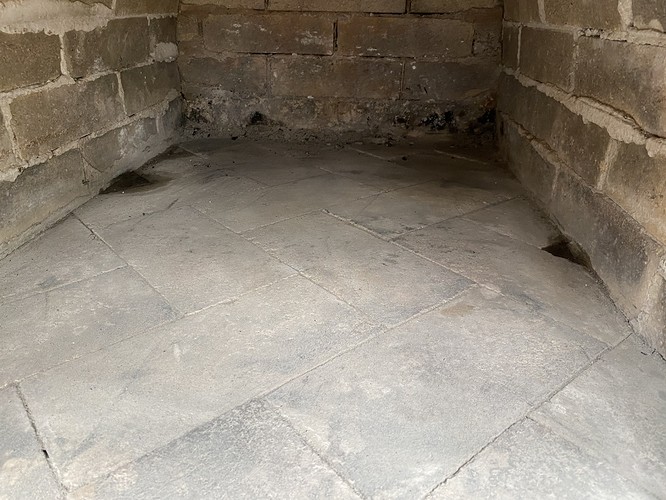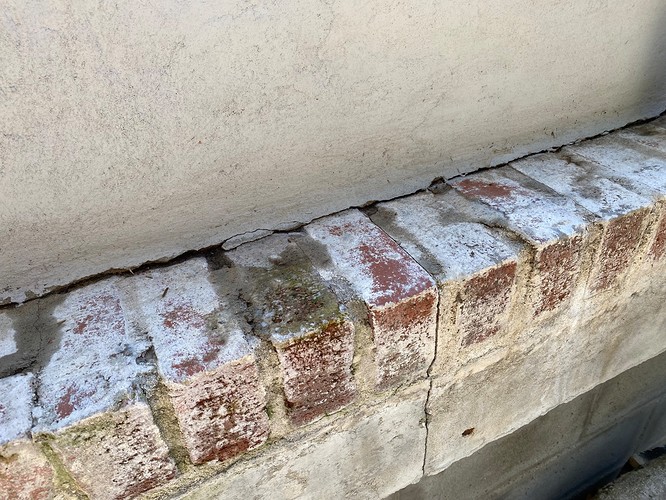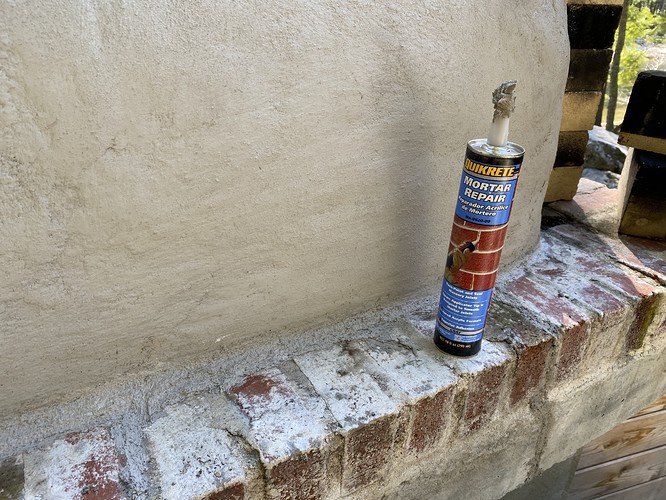I thought it was the chimney, I thought it was the door opening but I updated all of those and yet the back of the oven still gets soaked after rain storms. The only thing I can think of is it’s actually soaking through the oven, but to do that it would have to soak through the mortar, insulation, and firebricks…which doesn’t seem probable. How else could it be getting so wet inside the oven?
It would seem more likely to me that it's getting in through the exposed firebricks in the front.then making it's way (pooling) to the back. I really doubt it's soaking through all the layers you mentioned.Do you have a cover over the oven at all? I know the brink will absorb moisture, but there should not be “soaked” is there crack on your oven or a crack along where the brink or mortar meet your hearth? Can you post some pics to help us visualize whats going on?
So to follow up for a future searcher I painted the outside shell right after I posted this and it’s rained a bunch and the inside has bone dry every time. It’s weird but I think it was just soaking through and one coat of paint solve it!
Thanks for the update, Ryan. The stucco (mortar) shell by itself will not keep out water. A veneer will add the necessary waterproofing simply because of the adhesive used to stick it to the mortar. If you don’t add a veneer, the stucco must be painted with a good quality housepaint. One coat as you did is good. Two coats is better.
As for being wet in just the back…that’s where a full break exists between the brick of the dome and the brick of the back wall. There’s also a joint between the insulation over the dome and the insulation on the back wall. So, it makes sense to me that if water is finding its way in, it will go all the way through to your floor at that location.
I’m glad you painted it, and again thanks for the followup!
So, following up again here.
The painting helped but the floor was still very wet even with a tarp of the oven so I’ve been investigating to try and figure out where the water was coming from and I think I’m onto something. I completely cleaned out the oven, tarped it, and then checked on it in a week after some rain. The whole floor was wet but the sides and top were not, which makes sense given the tarp. Because the entire floor was wet It wasn’t clear how it was getting wet but that night after a pizza session I cleaned it again and only after a little rain the next morning I noticed this:
You can see the bricks on the sides are wet and along the back. So, the rain is soaking in through some cracks along the base of the oven. What’s still confusing though is the tarp covers this area, so it’s as if the rain is hitting the sides (of the slab with cracks), wicking in, and getting up on the floor. I got some high temp caulking I’m going to try and put a bead of that around the outside to see if that helps but I think I’m ultimately going to have to fill/cover the cracks on the slabs too to completely fix this problem.
Hi Ryan,
Thanks for the update and the photo. Definitely following this. And it’s not just you…I had the same kind of damp creep in at that point at left near the rear last week. I didn’t have any trouble along the back or along the right side.
Applied this mortar repair today to fill some of the cracks. I’m not sure why I have so many but I think it’s clear this is how the water is getting in. Because I painted the shell the water just rolls down the sides and back and pools here and soaks in. Hope this helps.
Ahh, makes sense.
That’s the sort of crack that will only get worse over time unless patched. Horizontally a lot of the stress is caught and dissipated by the rebar embedded in the hearth slab. But this kind of crack, through and through, needs exactly the treatment you applied to keep water from seeping in and then freezing in cold weather.
Many thanks for passing along the photos!


